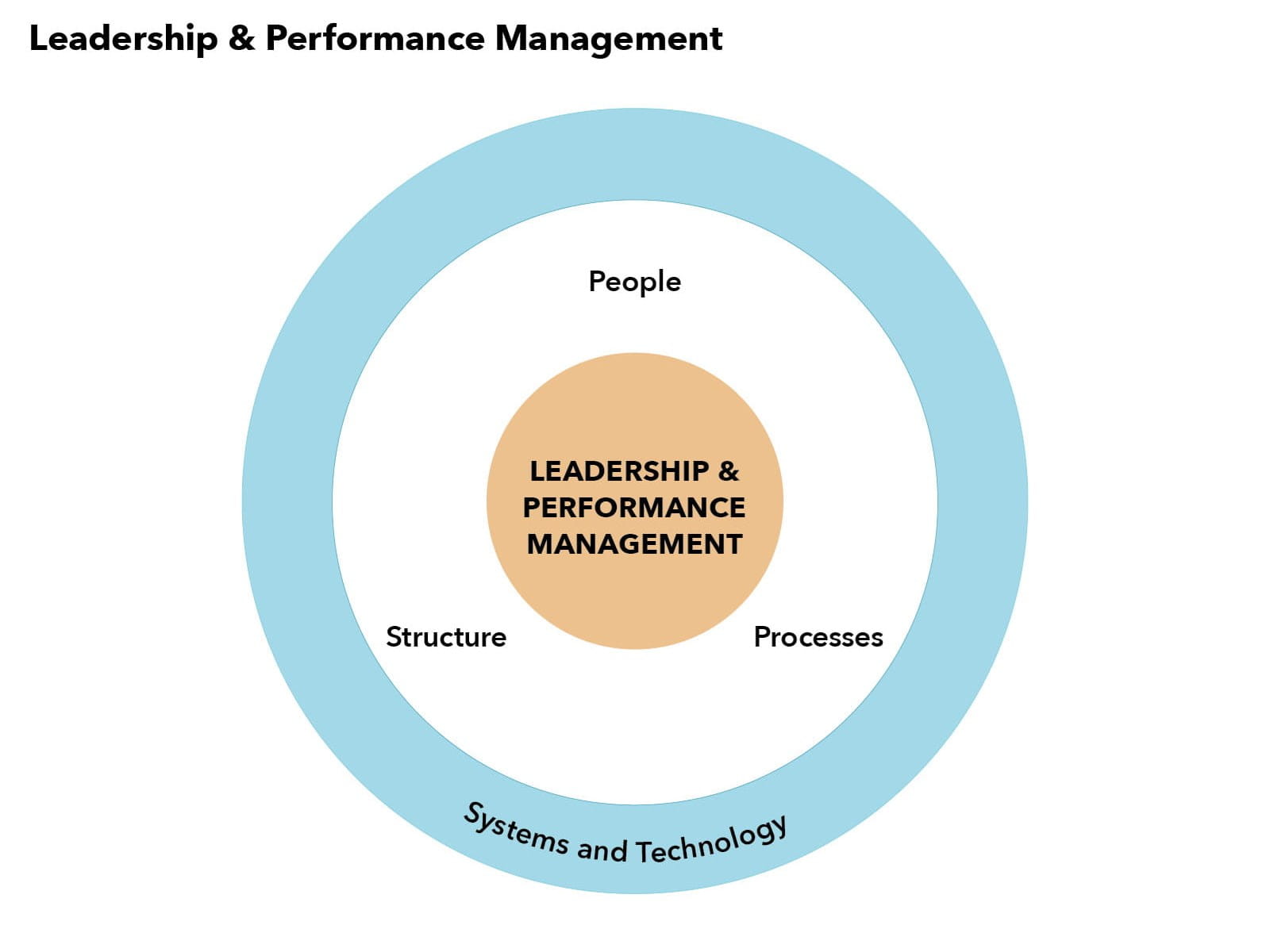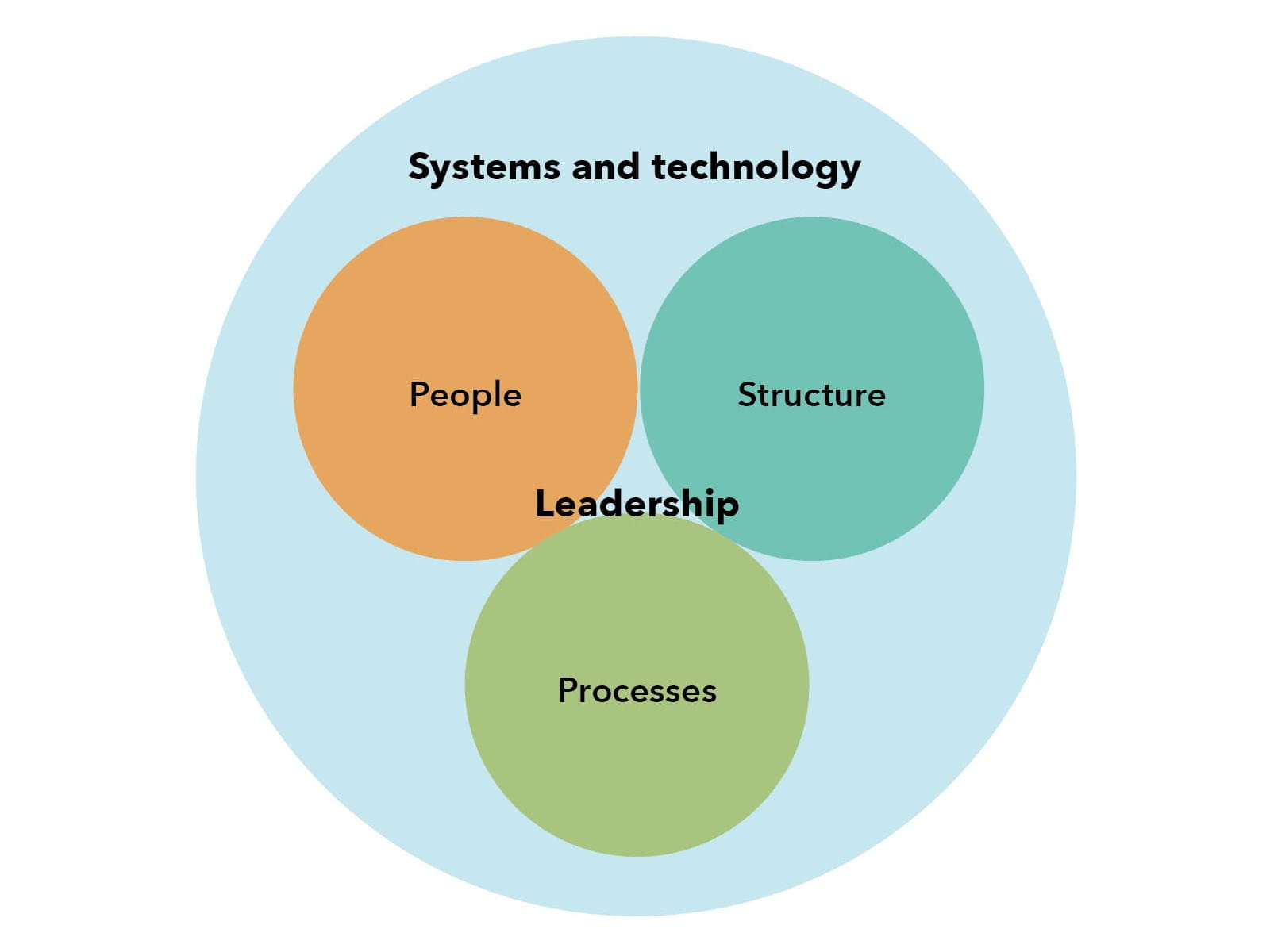
Systems and technology are different to all of the other topics we’ve covered in this series. Unlike process, people or structure, they link with everything involved with finance transformation programmes. Indeed, many now associate finance transformation with just getting new systems and technology in place (a view happily endorsed by many software and consultancy firms).
From my point of view, systems and technology are essential, but not the only things to consider. If you don’t treat software as something to support those core pillars of process – people and structure – you can end up with a disaster on your hands. There are numerous examples of transformation projects failing because of ill-thought-out technology investments. For example, look at FoxMeyer, a $5bn pharmaceutical company in the 1990s, which went bankrupt as the result of a failed ERP implementation.

In the FoxMeyer case, the implementation of this technology came at the cost of everything else. Leadership set an overambitious deadline for the project and didn’t consider how it might affect their existing people, processes and structure. Warehouse employees, feeling under threat from automation, were unsupportive. The system couldn’t cope with the company’s transaction volume, and order processing fell by 97% – from 420,000 orders a night to just 10,000. It ultimately forced FoxMeyer into bankruptcy.
So it pays to get technology right, and to consider your options in the context of the rest of your organisation – which is perhaps why people get confused over what technology and systems to invest in, often to the point of inaction. There are a lot of options out there, and software providers and consultants may provide biased perspectives on what your business needs – they have a vested interest in selling you what they have to offer.
By approaching technology by looking at your people, processes and structure first, you can take a more informed look at the various systems on offer.
Do you fit the tech, or does the tech fit you?
Large ERP software providers are increasingly encouraging businesses to go with their standard suite of software, rather than something more bespoke that has been customised to the organisation. From their perspective, this makes sense: they know that the processes built into the standard suite work. They know the segregation of responsibilities and where the people, structure and roles fit in. So that really helps implement an effective structure.
That’s not a bad thing, but equally, it might not be a fit for your organisation. What it comes down to, essentially, is how effective you feel your current people/process/structure setup is, and the appetite for changing that within the organisation. If you go with an out-the-box solution, you need to tailor everything else to fit the technology. If you want to bring in a platform with minimal change to your people, processes and structure, the technology must be adapted to fit seamlessly within that. Let’s have a look at this in more detail.
Process and technology
You may assume that your processes will be documented in a system that you adopt, but that will not always be the case. Whatever system you’re considering for implementation, it’s a good idea to map your processes to its design to determine how closely it aligns, and where either the software or the organisation needs to change. This is all about software design, and how it is documented on systems – the preparatory work that is essential to ensure that things transfer smoothly. Depending on your approach, this will involve a lot of additional communication with either the software providers or your team in order to get it right.
Once that is in place, then you can move on to the implementation of those processes with a clear workflow. Then – and I’ll keep coming back to this – you’ll need to evaluate its effectiveness and improve. There might be other software that you can use to assess the effectiveness of your processes and how to improve them.
People and technology
This is fairly straightforward from a software perspective: how the software you’re adopting integrates with HR systems, as well as clarity around processes, roles and responsibilities. This should link up with organisational data.
It’s also worth noting that, as with any transformational change, you need to ensure that your people are on the journey with you, and that they understand what will be expected of them once the new system is in place. The closer the software adheres to your current structure, processes, roles and responsibilities, the easier that will be, but inevitably there will be a change to everyday tasks as the software will automate some of the more transactional aspects of their roles. Put in sufficient training time to bring all of your staff up to speed with the new system, make sure your office is open, and be personally available to listen and respond to any concerns. If you need to adjust your team size, ensure that this is well communicated and that people can feed into the process and make their voices heard.
Structure and technology
The structure really helps to define the roles and responsibilities that can be locked into, for example, an ERP system. To use a simple example: who in finance drafts and approves an invoice? Who approves expenses, or issues the instruction to the bank to pay expenses? That should all be defined by roles in the structure and it should then be automated in the workflow that comes together as part of the work around process and design.
Linking the three
As you can probably tell, these considerations are all inherently linked. The system, if implemented correctly, is an enabler that ensures rock solid, dependable and effective processes, which links accountabilities and responsibilities. All of this must work together to ensure that any systems and technologies are implemented successfully and with appropriate controls.
Leadership, and the importance of metrics
Leadership and metrics are needed to help manage key components of any system’s implementation. Again, we’re revisiting our maturity assessments and gap analysis. There are several freely available sources that you can use for this, including the NAO’s guidance, The APM Maturity Model and this guide from audit.gov.ie.
Generating an action plan
Let’s look at the practical considerations when it comes to systems and tools as part of your GAME Plan for your transformation project. As always, we start with the gap analysis. You can view an example on our gap analysis template, which you can download here.
In our example, the organisation has an embryonic/non-existent approach when it comes to systems or tools, with little definition of the roles around technology, no alignment with the people, process and structure of the organisation and no management over this. The organisation sets a plan to get the foundation of this in place within one year, with alignment across pillars within three years.
Having done the gap analysis and established the timeline, we need to determine how to measure and manage the improvements to the maturity level. In our action plan template, which you can download here, our example organisation has set goals to establish a systems and tools GAME plan, set key finance pillar requirements etc, with clear responsibilities and a number of milestones for each.
As you can see, this is not about the numerous metrics required to run systems and technology effectively from an operational perspective – it’s about monitoring the progress of the project at a leadership level to make sure it is on track.
How to evaluate and continuously improve
With technology, the project never really ends. Usually, you would approach transformation through an iterative project, continuously aiming to find and implement improvements. The CFO should work closely with both the chief information officer and external advisers to help with this.
Be clear on your motivations for why you’re updating your systems and technology – it is a potentially big spend, so financial and non-financial benefits should be clearly mapped. Be really clear about what you need and why you need it.
Need to know
These are the critical messages from this article that you need to take away:
- Systems and technology isn’t a separate consideration for transformation; it should be part of every element.
- Consider how technology relates to people, structure and process separately, then link the three.
- Look at various models to help apply strategic thought to your technological approach.
- Prepare for continuous assessment and improvement – technology doesn’t stand still.
Next time
In the next article, we’ll conclude our topline look at the elements of finance transformation and start to get into the nitty-gritty of the project management skills you’ll need to learn in order to make transformation work.
Further reading
- Tools to help finance leadership succeed
- The finance team toolkit: leadership and performance management
- The finance team toolkit part 3: changing structure is not changing your organisation
- Finance team toolkit part 4: the right people
- The finance team toolkit part 5: processes
Neil Cutting has held many CFO and transformation leadership roles with complex global organisations. Most recently he was Vice President of Finance at Jacobs Solutions Incorporated, a $15bn Fortune 250 organisation. He is also a member of ICAEW’s Business Committee, which represents global business members, and guest lectures on strategic performance at the University of Bath.


